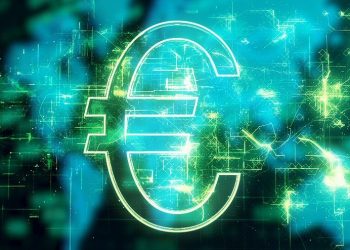Binance is one of the world’s largest and most popular cryptocurrency exchanges. Known for its extensive range of coins, Binance offers a platform where users can buy, sell, and trade various cryptocurrencies. This guide provides an in-depth look at the different types of coins available on Binance, helping users understand their options and make informed trading decisions.
Understanding Binance
Binance, founded in 2017 by Changpeng Zhao, quickly became a leading cryptocurrency exchange due to its wide range of supported cryptocurrencies, low trading fees, and advanced trading features. It provides a platform for trading not only major cryptocurrencies like Bitcoin and Ethereum but also a diverse selection of altcoins.
Types of Coins on Binance
Binance categorizes cryptocurrencies into several types, each serving different purposes and offering unique features. Understanding these categories can help users navigate the platform effectively.
1. Major Cryptocurrencies
Major cryptocurrencies, also known as large-cap cryptocurrencies, are well-established coins with high market capitalization and liquidity. They are typically the most traded and widely recognized.
Bitcoin (BTC): The first and most well-known cryptocurrency. Bitcoin remains the dominant coin in terms of market capitalization and is often referred to as digital gold. It is used as a store of value and for transactions.
Ethereum (ETH): Known for its smart contract functionality, Ethereum supports decentralized applications (dApps) and other cryptocurrencies through its blockchain. It is the second-largest cryptocurrency by market cap.
Binance Coin (BNB): Native to the Binance ecosystem, BNB is used to pay for trading fees on Binance and participate in token sales on Binance Launchpad. It has various utilities within the Binance platform.
Ripple (XRP): Ripple aims to facilitate fast and low-cost cross-border transactions. It is used by financial institutions and has a significant presence in the remittance market.
Litecoin (LTC): Often referred to as the silver to Bitcoin’s gold, Litecoin offers faster transaction times and a different hashing algorithm.
2. Altcoins
Altcoins are alternative cryptocurrencies to Bitcoin. They can vary significantly in terms of technology, use cases, and market performance. Binance supports a wide range of altcoins.
Cardano (ADA): Known for its research-driven approach and focus on scalability and sustainability, Cardano aims to provide a platform for the development of decentralized applications and smart contracts.
Polkadot (DOT): Polkadot focuses on interoperability between different blockchains, allowing them to work together. It aims to create a decentralized web where various blockchains can communicate.
Chainlink (LINK): Chainlink provides decentralized oracle solutions, enabling smart contracts to securely interact with real-world data.
Stellar (XLM): Stellar focuses on facilitating cross-border transactions and financial inclusion, especially in underbanked regions.
Tezos (XTZ): Tezos is a self-amending blockchain that supports smart contracts and decentralized applications. It aims to provide a more secure and scalable platform for developers.
3. DeFi Tokens
Decentralized Finance (DeFi) tokens are cryptocurrencies associated with decentralized financial services. DeFi aims to recreate traditional financial systems using blockchain technology.
Uniswap (UNI): Uniswap is a decentralized exchange (DEX) that allows users to swap various cryptocurrencies directly. UNI is the governance token of the Uniswap protocol.
Aave (AAVE): Aave is a decentralized lending platform that enables users to borrow and lend cryptocurrencies. The AAVE token is used for governance and staking.
SushiSwap (SUSHI): A fork of Uniswap, SushiSwap is another decentralized exchange with its own governance token, SUSHI, used for participating in protocol decisions and earning rewards.
Yearn.finance (YFI): Yearn.finance is a yield aggregation platform that optimizes yield farming strategies. YFI is the governance token used for decision-making within the protocol.
4. Stablecoins
Stablecoins are cryptocurrencies designed to maintain a stable value relative to a fiat currency, such as the US dollar. They are often used as a stable store of value or for trading.
Tether (USDT): Tether is one of the most widely used stablecoins, pegged to the US dollar. It is commonly used for trading and as a stable store of value.
USD Coin (USDC): USD Coin is a stablecoin backed by US dollar reserves. It aims to provide a transparent and fully-backed stablecoin solution.
Dai (DAI): Dai is a decentralized stablecoin created by MakerDAO. It is pegged to the US dollar and is maintained through collateralized debt positions.
5. Emerging Tokens
Emerging tokens are newer cryptocurrencies that may offer innovative features or technologies. These tokens can be highly speculative but may present unique investment opportunities.
Solana (SOL): Solana aims to provide high-speed and low-cost transactions, focusing on scalability. It has gained attention for its rapid growth and adoption.
Avalanche (AVAX): Avalanche is a platform for building decentralized applications and custom blockchain networks. It focuses on high throughput and low latency.
Elrond (EGLD): Elrond is a blockchain platform that aims to provide high scalability and low transaction costs. It utilizes sharding technology to achieve its goals.
Terra (LUNA): Terra is a blockchain platform that supports stablecoins and aims to create a decentralized payment network.
6. Utility Tokens
Utility tokens are used within specific blockchain ecosystems to access certain services or features. They often have applications beyond mere trading.
Basic Attention Token (BAT): BAT is used within the Brave browser ecosystem to reward users for their attention and provide a means for advertisers to pay for ad placements.
The Graph (GRT): The Graph is a decentralized indexing protocol used to query and retrieve data from blockchains. GRT is used for governance and to access network services.
REN (REN): REN provides privacy solutions and interoperability between blockchains. The REN token is used for governance and accessing network features.
How to Choose Coins on Binance
Choosing which coins to invest in or trade on Binance requires careful consideration. Here are some factors to keep in mind:
Market Capitalization and Liquidity
Higher market capitalization and liquidity generally indicate a more established and stable coin. Larger market cap coins are less likely to experience extreme price fluctuations and are easier to trade.
Technology and Use Case
Understanding the technology and use case of a coin is crucial. Coins with innovative technology or a strong use case may have greater long-term potential.
Team and Development
Research the development team behind a coin and their track record. A strong and experienced team can positively impact a coin’s success and sustainability.
Community and Adoption
A strong and active community can drive a coin’s adoption and growth. Coins with substantial community support and real-world use cases are often more promising.
Regulatory Environment
Consider the regulatory environment surrounding a coin. Coins that comply with regulations and have clear legal standing are less likely to face legal issues.
Trading and Managing Coins on Binance
Once you have selected the coins you want to trade or invest in, managing your portfolio on Binance involves several steps:
Creating an Account
To start trading, create an account on Binance. Complete the required identity verification process and enable security features such as two-factor authentication (2FA).
Depositing Funds
Deposit funds into your Binance account using supported methods, such as bank transfers, credit/debit cards, or cryptocurrency transfers.
Placing Orders
Use the trading interface to place buy or sell orders for your chosen coins. You can select between market orders, limit orders, and stop orders based on your trading strategy.
Monitoring Your Portfolio
Regularly monitor your portfolio’s performance and adjust your trading strategy as needed. Binance provides various tools and charts to help you track your investments.
Securing Your Assets
Consider transferring your coins to a secure wallet for long-term storage. While Binance provides security features, using a personal wallet adds an extra layer of protection.
See also: Is OKCoin Insured?
Conclusion
Binance offers a diverse selection of coins, catering to various interests and investment strategies. From major cryptocurrencies to emerging tokens and utility tokens, Binance provides a platform for trading and investing in a wide range of digital assets. Understanding the types of coins available, their characteristics, and the factors to consider when choosing them can help you make informed decisions and manage your cryptocurrency investments effectively.
With this comprehensive guide, you are now equipped to explore the cryptocurrency options on Binance and take advantage of the opportunities in the dynamic world of digital assets.
Related topics:

















